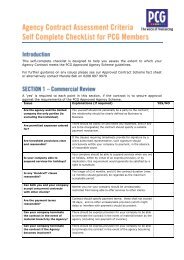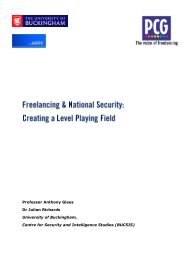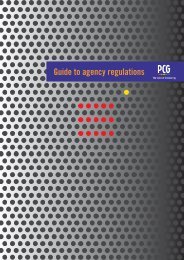Guide to Freelancing - PCG
Guide to Freelancing - PCG
Guide to Freelancing - PCG
You also want an ePaper? Increase the reach of your titles
YUMPU automatically turns print PDFs into web optimized ePapers that Google loves.
You can deduct one percent off the flat rate that you use for your first year of VAT registration. On<br />
the first anniversary of your VAT registration, the rate will revert <strong>to</strong> the standard percentage.<br />
To fill out the VAT return you need <strong>to</strong> know your <strong>to</strong>tal sales and VAT amounts for the quarter. This<br />
can be calculated in one of two ways:<br />
a) A cash basis: add up the amounts actually received from clients in the quarter.<br />
b) An invoice basis: add up the amounts invoiced <strong>to</strong> clients in the quarter.<br />
To register for the Flat Rate Scheme, ask your accountant or visit:<br />
http://www.hmrc.gov.uk/vat/start/schemes/flat-rate.htm#10<br />
IN A NUTSHELL: VAT<br />
<br />
Freelancers earning over £73,000 (VAT threshold) have <strong>to</strong> register for a VAT<br />
number and add VAT <strong>to</strong> invoices<br />
UK VAT is currently 20%<br />
<br />
<br />
The flat rate scheme is generally the best option for freelancers earning up <strong>to</strong><br />
£150,000. It is relatively hassle free and can result in savings (these are treated<br />
as income for the purposes of calculating your corporation tax or personal tax<br />
liability)<br />
You can account for VAT based on the time you invoice or the time you are paid.<br />
Copyright <strong>PCG</strong> September 2011 <strong>Guide</strong> <strong>to</strong> <strong>Freelancing</strong> Version 7.0 49








